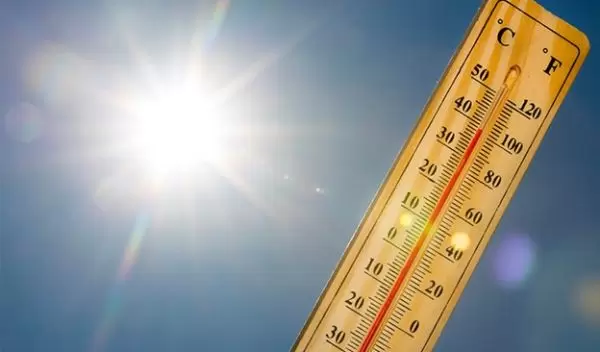
Risk of death surges when extreme heat and air pollution coincide
Heat waves and air pollution are harmful, even deadly, and both are predicted to increase in frequency due to climate change. A team of researchers at the University of Southern California is helping shed light on those health risks by assessing six years of air quality, temperature and death certificate data in a new study published in the American Journal of Respiratory and Critical Care Medicine.
The U.S. National Science Foundation-supported research found that compared to days without extreme conditions, extreme heat days carried a 6.1% increase in risk of death. On extreme air pollution days, deaths were 5% more likely. But on days with both extreme heat and air pollution, deaths were 21% more likely — a synergistic effect almost double the impact of the individual exposures combined.
"We found that the mortality effect of exposure to both extreme temperatures and extreme pollution is greater than the sum of their individual effects," said Mostafijur Rahman of the Keck School of Medicine at USC and lead author of the study.
Previous studies have examined how extreme heat and air pollution separately affect mortality risk and how each varies with the other. The present study is the first to use a new approach to study what happens when extreme heat and air pollution coincide.
"The increase in deaths expected to occur as a consequence of the rise of extreme heat and wildfires associated with climate change accentuates how important mitigation and adaptation measures have become," said Bruce Hamilton, a program director in NSF's Directorate for Engineering.
Along with overall mortality, this study also examined deaths due to cardiovascular and respiratory conditions. On extreme exposure days, people over age 75 faced a higher risk. The findings could help individuals, communities and health care systems prepare for extreme weather and minimize potential harm.
"Understanding the risks associated with these exposures is really important because we know that they will increase with climate change in many different parts of the United States and the world," said Erika Garcia at the Keck School of Medicine and the study's senior author. Wildfires, for example, which are expected to increase up to 50% by the end of the century, often involve extreme heat and pollution that last for days or weeks.
Garcia, Rahman and their colleagues studied all deaths in California between 2014 and 2019 — a total of more than 1.5 million — using death certificate data from California's Department of Public Health. They also obtained data on air temperature and levels of fine particulate matter, tiny particle pollution in the air that is known to cause health problems.
On days with both extreme heat and air pollution, the overall mortality risk increased 21%. The risk of death due to cardiovascular problems increased 29.9% and risk of death due to respiratory problems increased 38%.
Older adults faced significantly higher risk, with a 36.2% increase in mortality risk for those over 75, compared to an 8.5% increase in mortality risk for people 75 and under when exposed to both extreme heat and pollution.
The findings underscore the need for protective measures and interventions as the environment continues to change, Garcia said.


